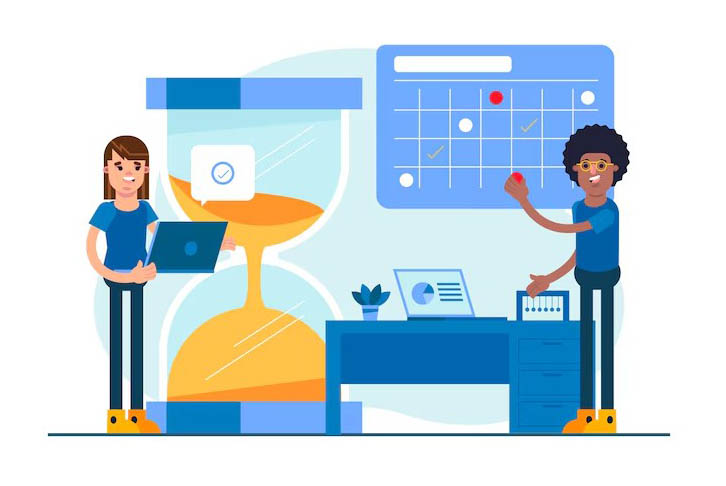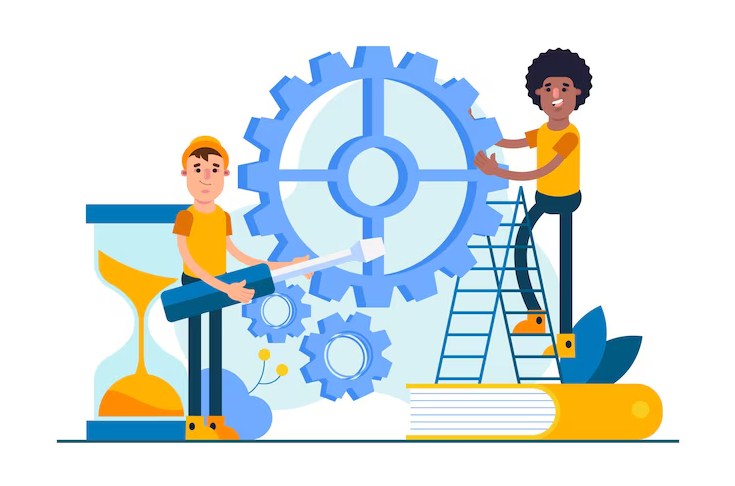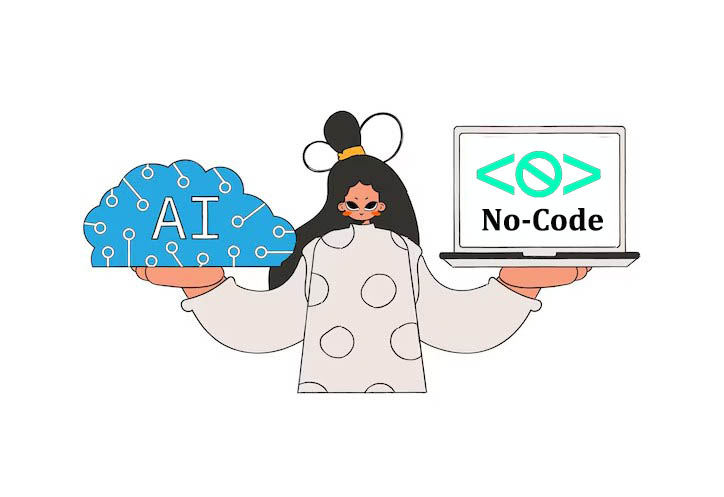Introduction
In today’s quick-moving IT world, saving money while getting the most out of what we have is super important for businesses.
The use of AI development services has become a big help in reaching this goal.
Let’s look at how AI development services are changing the game in making IT work more cost-efficient, looking at what they bring to the table and how companies big and small can benefit from them.
Discover How AI is a Cost-Effective Solution in IT Industries.
1) Automating Repetitive Tasks
Robotic Data Entry
One area where AI shines is data entry work. Typing names, numbers, and other information into computers and databases is boring and repetitive.
Humans make a lot of mistakes when doing this monotonous work for hours on end. But AI software can rapidly enter data with 100% accuracy, never getting tired or distracted.
24/7 Customer Support
Ever needed help from a company but got stuck with a never-ending hold of music or a recording that didn’t solve anything?
Now, there are AI chatbots and virtual helpers available 24/7 to make things easier.
They quickly deal with the usual questions, take care of your orders, and sort out basic stuff all by themselves.
Automated Factories and Logistics
In manufacturing, AI controls can run entire production lines without requiring human operators. AI robots can assemble products, pack boxes, and sort inventory. AI software coordinates distribution by automatically routing trucks and scheduling deliveries. This lights-out automated operation reduces labor costs significantly.
In our exploration of how AI is a cost-effective solution in IT industries, we delve into the realm of AI development services.
2) Improving Efficiency
Optimizing Workflows
Once problems are spotted, AI can redesign entire workflows to eliminate wasted time and resources.
AI process mining software maps out current processes and then tests alternatives to create leaner, more optimized workflows.
This could mean reallocating tasks, resequencing steps, enabling automation, or adjusting workloads.
Smarter Scheduling and Routing
Businesses that have teams out in the field, like sales folks and delivery drivers, can benefit from using AI to plan their meetings and routes better.
AI looks at things happening right now on the roads, where customers are, who’s available to work, and more info to come up with the best schedules.
This way, they can save time on the road and cut down on how much gas they use.
Self-Correcting Processes
AI doesn’t just analyze and optimize processes once – it continuously monitors operations to enable true continuous improvement.
By tracking process metrics and outputs in real-time, AI can automatically update and self-correct processes as conditions change. This ensures maximally efficient operation at all times.
3) Enhancing Decision Making

Exploring how AI is a cost-effective solution in IT industries reveals its potential to streamline processes and reduce operational expenses.
Data-Driven Product and Marketing Strategy
What products should we develop next? What new markets should we expand into? How can we increase sales of our latest offering?
AI makes these critical strategic decisions easier by comprehensively analyzing internal data and market research.
AI can study consumer demand, demographic trends, competitor activities, sales performance data, social media mentions, and more.
It combines all these inputs to generate recommendations on products, pricing, promotion tactics, and go-to-market plans backed by hard data.
Predictive Inventory Management
For companies selling physical products, investing too much into inventory is a massive cash drain. But stockouts that miss sales opportunities are also costly.
AI cracks this tricky problem by smartly predicting what people will buy in the future with clever computer programs.
It looks at what’s been sold before, checks if there are any special times of the year when people buy more or less, sees if there are sales that might make people buy more, and considers other important details.
AI-Powered Sales Performance
AI provides sales teams with deep insights into every customer and prospect. It analyzes data from CRM systems, website interactions, email engagement, and company news.
The AI uses this comprehensive customer intelligence to recommend the right products, messaging, and upsell opportunities for each sales situation. AI-assisted selling means more deals closed.
4) Reducing Labor Costs
Self-Service Channels
Having employees handle routine customer inquiries is extremely expensive and inefficient.
AI self-service solutions like conversational chatbots, interactive voice response systems, and dedicated mobile apps allow customers to find answers and resolve issues independently.
This drastically reduces call volumes and in-person visits, so you need fewer customer service reps on staff.
Plus, AI self-service is available 24/7 at a fraction of the cost of human agents working around-the-clock shifts.
Content Creation and Curation
Creating fresh website and marketing content like articles, product descriptions, social media posts, and email newsletters is another task increasingly handled by AI.
Natural language generation AI algorithms can automatically produce readable, on-brand content customized for your specific business.
The content just needs a quick review by human editors.
AI helps content teams spend more time planning and making standout pieces instead of just making lots of basic content.
Robotic Process Automation (RPA)
Besides simple jobs like putting in data, AI with RPA can handle very complicated tasks that need many steps, just like a person would.
The ROI is significant, as a single software robot can do the work of several full-time employees.
Semi-Autonomous Machinery
In industries like construction, agriculture, and mining, autonomous equipment and vehicles reduce the need for on-site human operators.
GPS-guided excavators and dozers can do earthmoving with no one in the cab. Robotic harvesters and combines can bring in crops efficiently with minimal oversight.
While still requiring monitoring and adjustment at times, the increased autonomy enabled by AI sharply reduces labor requirements for these applications compared to relying entirely on human-operated machinery.
5) Enabling Predictive Maintenance
Condition Monitoring and Failure Prediction
Keeping machines and important systems running is key for any company.
The costs quickly skyrocket from lost productivity, emergency service calls, and replacing failed components.
AI-powered predictive maintenance systems prevent these nightmare scenarios from occurring.
The AI tirelessly monitors sensor data and machine logs from your equipment and infrastructure, watching for subtle deviations that signal an impending failure.
By detecting these anomalies weeks or months in advance, maintenance can be scheduled proactively during planned downtime windows.
Artificial intelligence business solutions enable predictive analytics and data-driven decision-making, leading to more efficient resource utilization and cost savings for IT businesses.
Root Cause Analysis
When issues eventually do occur, AI can rapidly pinpoint the root cause by cross-analyzing all available data sources.
These insights allow technicians to go straight to the source of the problem, rather than wasting time checking multiple potential culprits. AI shortens the time to repair by eliminating guesswork.
Infrastructure Monitoring
For businesses like power companies, phone services, and others that use a lot of equipment spread out far and wide, checking for and fixing problems takes a lot of time and costs a bunch.
Teams might have to check out thousands of miles of pipes, wires, cell towers, and other stuff all over the place.
AI-powered drones and sensors can continuously monitor this critical infrastructure at a fraction of the cost.
Machine learning models analyze drone footage, IoT sensor data, and other inputs to automatically identify areas requiring maintenance before major failures.
This predictive approach replaces inefficient manual inspections while preventing service disruptions and safety incidents.
6) AI for Cybersecurity and Fraud Prevention
Detecting Threats in Real-Time
One area where AI excels is cyber security consulting services. Hackers keep coming up with new ways to cause trouble, which means the usual security programs can’t always catch up.
However, AI can go through tons of data from networks, servers, what people are doing online, and more to spot even tiny odd things happening as they happen.
If someone’s login location suddenly changes or they start transferring huge files, AI will instantly flag that as suspicious behavior requiring investigation.
AI algorithms get smarter over time, automatically learning patterns and evolving to catch novel attacks.
Identifying Fraud Faster
AI fraud detection systems, however, can cross-reference every transaction across numerous data points like geographic location, purchase histories, device fingerprints, telephone records, and more.
AI can connect millions of seemingly unrelated data points that humans would miss to identify fraud quickly and accurately.
Automating Incident Response
When AI does detect a credible threat, it can automatically execute an automated incident response plan.
This could include temporarily blocking potentially compromised accounts, isolating affected systems, deploying security patches, and notifying the right personnel.
Rather than a slow human response after the damage is done, AI enables an instant, coordinated incident response to minimize the impact before issues can spread further.
This automated response prevents far costlier breaches and data loss.
Simulating Attacks for Training
One powerful use of AI in cybersecurity is to constantly simulate real-world attack scenarios on a company’s systems during normal operation.
This lets security teams identify gaps proactively before vulnerabilities can be exploited.
Using AI to regularly model both known threats and never-before-seen attacks allows organizations to continually harden their defenses over time.
It’s affordable red team training that an internal cybersecurity staff could never replicate at scale.
7) Democratizing AI with No-Code Tools
Empowering Non-Technical Users
While extremely powerful, AI has traditionally been limited to companies with deep technical expertise and resources to build and deploy custom machine learning models.
Not anymore – the rise of no-code AI platforms is democratizing AI for businesses of all sizes.
No-code AI tools use visual, drag-and-drop interfaces requiring zero programming experience.
Non-technical staff can simply upload their data, set goals and constraints, and then let the AI build and deploy custom models automatically.
Streamlining AI Deployment
Traditional AI development is a complex, multi-step process:
- Preparing data
- Selecting algorithms
- Training models
- Optimizing hyperparameters
- Evaluating performance
- Deploying to production
No-code AI platforms make this whole process simpler, making it one automated system that anybody can handle.
Continuous Model Optimization
AI models, like any software, require continuous care and iteration to maintain peak performance as new data arrives and conditions change.
Manually retraining, testing, and redeploying models is expensive and time-consuming with traditional approaches.
No-code AI handles this automatically.
The platform continuously validates model outputs, retrains new data, and rebuilds optimal models in the background.
Up-to-date, production-ready models are always available with zero manual effort.
Scaling AI across the Business
Perhaps the biggest advantage of no-code AI is how it empowers any team, department, or branch office to quickly create and deploy AI solutions customized for their specific needs – all without relying on centralized AI experts or expensive professional services.
Conclusion
As this overview illustrates, AI development services provide innovative solutions to streamline operations and maximize cost-efficiency across all areas of IT and business.
By automating repetitive work, optimizing processes, guiding decisions, reducing staffing needs, and enabling predictive maintenance, AI allows companies to operate leaner and more profitably.
Those who resist adopting AI solutions risk falling behind more efficient, data-driven competitors.
Is your organization taking full advantage of AI to boost productivity and cut costs? Let us know in the comments below!
FAQs
1) Is AI software relatively inexpensive to develop and implement?
While building custom AI does require expertise, many AI solutions are available as cost-effective cloud services and APIs. The ROI from AI-driven efficiency gains often far outweighs the initial investment for most companies.
2) How safe is using AI technology?
Top-tier AI services apply strong safety steps like codes to keep data private and safe from leaks. You always keep full control and ownership of your data.
3) Which kinds of businesses get the most out of AI in saving money?
Businesses that do the same tasks over and over, deal with lots of data, run complex operations, use costly machines, or have big staff bills can save a lot by using AI to automate and make things more efficient.
4) How quickly can we see results from implementing AI?
The timeline varies based on scale, but many companies start seeing efficiency gains and cost savings in just a few months after deploying AI solutions.
5) Will robots take over all jobs from humans one day?
Even though AI will change some jobs, its main goal is to help and enhance what humans can do, not to take their place completely.
There are many jobs where we’ll still need people for their ability to understand emotions, be creative, and make big decisions.








